Baldwin Leads Push to Make More Farmers Eligible for PPP Loans

U.S. Senators Tammy Baldwin (D-WI) and John Thune (R-SD), as well as Congressman Ron Kind (D-WI), are leading a bipartisan group of their colleagues in urging the U.S. Department of Treasury and the Small Business Administration (SBA) to issue new clarifications that would ensure more farmers and ranchers are eligible for loans through the Paycheck Protection Program (PPP). Baldwin, Thune, and Kind are joined in this bipartisan effort by Senators Joni Ernst (R-IA) and John Hoeven (R-ND).
Many farmers, ranchers and agriculture producers were falling through the cracks in the Paycheck Protection Program when it was first created by the SBA last year. That’s why Senators Baldwin and Thune’s bipartisan legislation was included in the recently passed Economic Aid Act to increase the amount of small and struggling farmers eligible to receive a loan from the PPP by allowing them to use gross income to calculate their loan award. However, many farmers and ranchers are organized as partnerships or limited liability companies, which are taxed differently than other farm and ranch entities. These agricultural producers have been unable to apply for loans under the new calculation because of the SBA’s interpretation of eligibility for partnerships or limited liability companies.
Last week, the lawmakers urged Treasury Secretary Janet Yellen and SBA Acting Administrator Tami Perriello to act swiftly to clarify that all farmers and ranchers reporting self-employment income on tax form Schedule F can access these loans through this new eligibility calculation.
This new bipartisan push comes after Senators Baldwin and Thune urged the Treasury Department and SBA in January to make more farmers eligible for the second round of PPP funds.
The full letter is available below and here.
Dear Secretary Yellen and Acting Administrator Perriello:
We write to you today to request that the Small Business Administration (SBA) provide its interpretation of Division N, Title III, Sec. 313 of the Consolidated Appropriations Act of 2021, P.L. 116-260, titled: “Calculation of Maximum Loan Amount for Farmers and Ranchers Under the Paycheck Protection Program.” In addition, as the authors of, and advocates for, this provision, we aim to provide you information that may be useful for your interpretation of legislative intent. We believe Sec. 313 provides the SBA the authority to apply the new maximum loan calculations included in this provision to partnerships, limited liability companies, and any other farm or ranch entity taxed as a partnership reporting self-employment income on tax form Schedule F.
Sec. 313 provides a new maximum loan calculation to an eligible recipient that “operates as a sole proprietorship or as an independent contractor, or is an eligible self-employed individual.” Under the original statute creating the Paycheck Protection Program (PPP) in the Coronavirus Aid, Relief, and Economic Security (CARES) Act, P.L. 116-136, these same small business organizations were singled out for eligibility, which the SBA broadly interpreted to include partnerships and limited liability companies. However, farmers and ranchers without payroll or positive net income in 2019 were shut out of the original PPP. Therefore, we drafted this provision to provide as many farmers and ranchers as possible with an alternative calculation to increase their eligibility for the PPP and anticipated that the SBA would apply the same broad interpretation of sole proprietorship, independent contractor, or self-employed individual.
Many farmers and ranchers in our states and districts organized as partnerships or limited liability companies have been unable to apply for loans under the new calculation because of the confusion around this narrow interpretation even though they file self-employment income on a tax form Schedule F. Therefore, we urge you to act as swiftly as possible to clarify that all farmers and ranchers reporting self-employment income on tax form Schedule F can access this new formula created by Sec. 313. Our offices stand ready to provide any additional information you may need to clarify this provision of the bill.
Message of Resiliency, Perseverance Received at FarmFirst Virtual Meeting

Resiliency and perseverance was the message that FarmFirst Dairy Cooperative President John Rettler delivered in his remarks to delegates during the cooperative’s virtual annual meeting held on Friday, February 12.
“This past year, businesses closed their doors. Restaurants, bars, and schools closed to prevent the spread, but we still kept plugging away, keeping up on our work and keeping our milk house doors open for the milk truck to arrive,” said Rettler. “We all are well aware of our dedication, but sometimes it deserves special recognition – especially during a pandemic.”
Rettler shared his optimism for the future, noting that such a challenging experience such as the COVID-19 pandemic certainly reminds us of the value our family and friends. He pointed out that in addition to dairy farmers, cheesemakers, truck drivers, and everyone in between also need to be recognized as consumers came to realize that those in food production are essential in keeping food available and stocked in grocery stores.
Delegates reviewed current and proposed amendments to the cooperative’s public policy. They reaffirmed their support for the Dairy Margin Coverage (DMC) program and changes to further enhance the program. With respect to Federal Milk Marketing Orders, the delegates approved policy to address negative Producer Price Differentials, among other federal order issues.
With respect to international trade policy, delegates further emphasized their support for fair trade agreements and added their opposition to agreements that sacrifice dairy interests for gains by other U.S. industries or ag commodities.
General Manager Jeff Lyon commended members for their continuous hard work in spite of the pandemic, reiterating the cooperative’s commitment to supporting dairy farmers through improved dairy policies and strong advocacy. He noted of the challenges faced across the industry, creating dramatic shifts in consumer demand to the retail space. While the cooperative’s milk marketing division managed to find a home for all of its milk, some were not so lucky.
“The obstacles we faced in 2020 took on many forms. In many instances, our hard work paid off. Yet, we cannot rest on our laurels,” said Lyon. “With the pandemic still not under control and restaurant and food service institutions still not running at full capacity, there is concern on the growing gap between milk production and demand. We cannot eat our way out of this. Thankfully, our export markets have been strong to absorb much of the milk being produced. Our attention will continue to focus on expanding current U.S. trade.”
Lyon also shared how FarmFirst was successful in addressing the hardships faced by dairy farmers through the pandemic by securing more than $2.8 billion in direct financial assistance to dairy farmers through the first and second Coronavirus Food Assistance Programs (CFAP), $1.25 billion through the Farmers to Families Food Box programs as well as additional dairy product purchases under purchase programs including USDA’s Section 32 program. The Dairy Margin Coverage (DMC) program also buoyed farm income for those enrolled with more than $200 million in payments. In total of all these programs, more than $4.89 million was disbursed to dairy farmers in 2020.
Lyon noted that the cooperative is in very good financial condition with all three divisions of the cooperative; Family Dairies USA, Fox Valley Quality Control Lab, and Member Services were profitable. Lyon shared his gratitude to the cooperative’s staff and their role in keeping the cooperative’s divisions open and operating, both safely and smoothly during the pandemic.
Looking to 2021, Lyon expressed optimism in building off the progress made in the past year, particularly on trade policy, FDA enforcement of labeling regulations and USDA advancing formal recognition in the positive role dairy products play in a healthy diet.
“Political dynamics and legislative priorities are always evolving, which is why FarmFirst is keeping a vigilant eye on these issues. Climate change, tax policy and ag labor come to mind. Others specific to milk pricing include federal order reform, negative PPDs, Class I price mover, the block/barrel price spread and oversight of CME price discovery,” said Lyon. “Now is the time for FarmFirst and our partners in Washington, D.C. to ensure our elected officials know the challenges facing the dairy industry and get things done for you.”
Jeff Schwager, CEO of Sartori Cheese, Plymouth, WI joined members to discuss various trade issues and the value of quality trade agreements in supporting the dairy industry.
Schwager, whose company exports their award-winning cheeses around the world, emphasized the dramatic impact that common cheese names and geographical indicators can have on the ability for a Wisconsin-based cheese company like Sartori to sell their cheese in countries that are looking to protect market share.
“Because of trade barriers existing in Europe, we had to come up with a new variety of cheese, which is how BellaVitano was created,” said Schwager. “The Europeans are working quicker than the U.S. is currently to get new free trade agreements in place, which is diminishing available markets to U.S. cheese exporters like Sartori. A cheese like parmesan cannot be sold in Mexico labeled as parmesan due to these trade barriers. The U.S. can label U.S.-made parmesan cheese under the Spanish name, parmesana, however, in that market, these cheeses are looked at being inferior and of lower quality.”
Schwager pointed out additional global market barriers that are restricting U.S. cheesemakers to market their cheese effectively and competitively in certain countries.
“China and Europe have retaliatory tariffs in place today. As an example, Europe placed a retaliatory tariff of 25% on U.S. cheese, virtually taking U.S. cheese out of the market. Unbalanced duties and export fees mean that Europe pays less per pound to export their cheese to the U.S. than what we pay to export there,” added Schwager.
He concluded by emphasizing the active role dairy farmers can play and using their voice to ensure policymakers and trade ambassadors know of the importance quality dairy trade agreements have on the U.S. dairy industry.
Re-elected to a three-year term, on the ten-member board of directors included Dan Vandertie, Brussels, Wis. to serve District 2, Wayne Gajewski, Athens, Wis. to serve District 4 and Kathy Bauer, Faribault, Minn. to serve District 9. Other board members include Steve Brock of Daggett, Mich. in District 1, John Rettler of Neosho, Wis. in District 3, Jean Reisinger of Spring Green, Wis. in District 5, Bob Dietzel of East Dubuque, Ill. in District 6, Rich Meyer of Unity, Wis. in District 7, and Brian Wozniak of Stanley, Wis. in District 8.
Annual meeting sponsors included at the platinum level are ARM Services, Compeer Financial, Dairy Farmers of Wisconsin, Dairy Management, Inc., M3 Insurance, Nelson-Jameson, Steimle Birschbach LLC, and Wisconsin Bank and Trust. This year’s emerald sponsors included CliftonLarsonAllen LLP, Investors Community Bank, StoneX, Vrakas Blum, Wisconsin Beef Council and the Wisconsin Livestock Identification Consortium. All sponsor contributions, which totaled just over $4,000, will go to the cooperative’s scholarship program.
FarmFirst’s 10th Annual Meeting is set to take place February 11-12, 2022 in Onalaska, Wis.
Von Ruden Responds to Biennial Budget Address
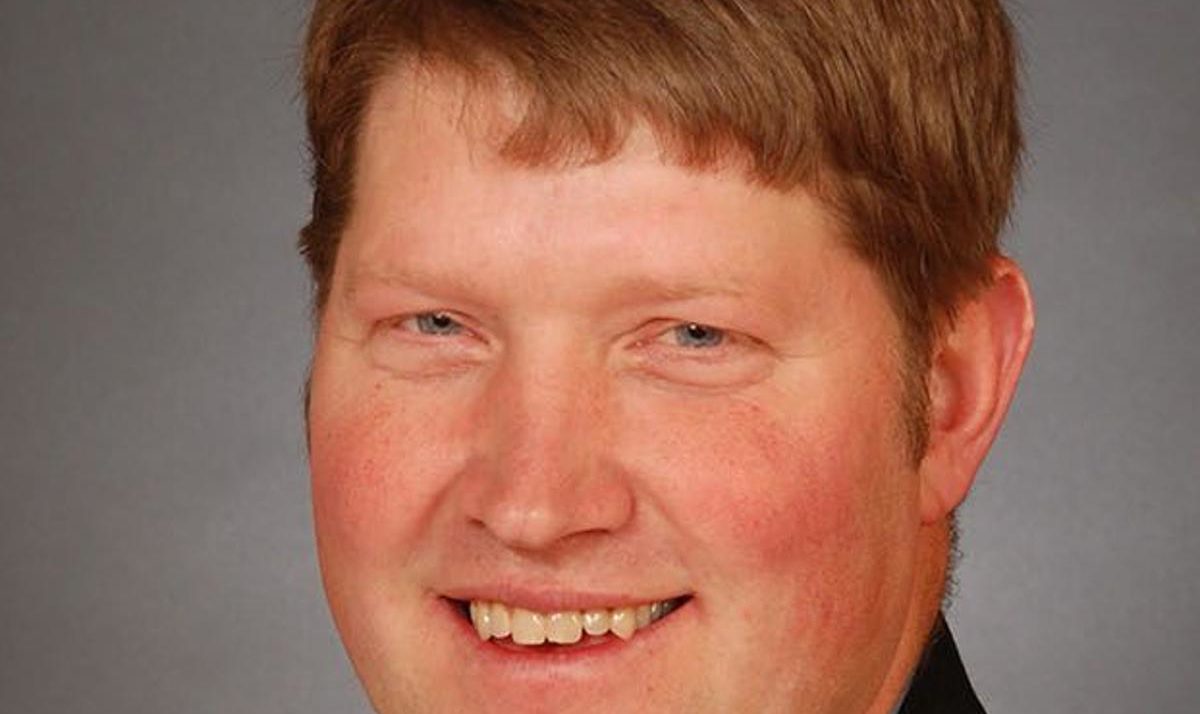
Wisconsin Farmers Union President Darin Von Ruden issued the following statement in response to the 2021-2023 Biennial Budget Address:
“The Governor’s proposed budget hits many of the checkboxes Wisconsin Farmers Union advocated for, and we are pleased to see a hearty investment in Wisconsin’s family farms and rural towns. The investment in agriculture and rural infrastructure is encouraging. This funding will widen the reach of rural broadband, expand local food systems and marketing opportunities for farmers, invest in meat processing, aid in addressing rural mental health, expand access to BadgerCare, and foster producer-led conservation efforts to protect the land and water and act on climate change. WFU looks forward to working with Governor Evers, DATCP, members of the Joint Finance Committee, Assembly, and Senate to advance these priorities. We also strongly urge ongoing opportunities for virtual engagement and public input as this process moves forward so we have a final budget that truly represents and serves the citizens of this state.”
Join the Salute to Industry Excellence at CheeseExpo Global Online

Celebrate a year of industry excellence during the virtual awards banquet at 2021 CheeseExpo Global Online. Sign up now at CheeseExpoGO.org!
Three days of educational seminars and networking opportunities caps off on April 8 with a special program saluting the Wisconsin Cheese Makers Association (WCMA) Life Member Honorees, 2020 World Championship Cheese Contest top winners and volunteers and Wisconsin Master Cheesemakers™.
“The virtual banquet at CheeseExpo Global Online salutes the industry’s best and brightest,” said John Umhoefer, WCMA Executive Director. “We’re excited to come together and celebrate the immense successes this industry brings.”
Tune in April 8 at 3 p.m. (CT) for the virtual banquet, which will begin by honoring the 2020 and 2021 WCMA Life Member Award recipients, Roger Krohn of Agropur and Mark Schleitwiler, an industry consultant and former leader at BelGioioso Cheese, Wolht Cheese and Churny Company. The highest honor WCMA award, the Life Member Award recognizes people who have played a significant role in the success of the Association through leadership, support and service to the institution and its activities.
Attendees will hear from the producers of the 2020 World Championship Cheese Contest’s top three cheeses. In 2020, a gruyere called Gourmino Le Gruyère AOP, made by Michael Spycher of Mountain Dairy Fritzenhaus for Gourmino AG was named the Champion Cheese. First Runner-Up in the contest was Gallus Grand CRU, a hard cow’s milk cheese made by Hardegger Käse AG of Jonschwil, St. Gallen, Switzerland. Lutjewiinkel Noord Hollandse Gouda PDO, a mature gouda aged four to 10 months, made by Royal FrieslandCampina-Export earned the Second Runner-Up trophy. WCMA will also salute the industry members who make the Contest possible, including expert judges, volunteers and competitors.
The virtual banquet will also celebrate the talent of the 2020 and 2021 graduating classes of the Wisconsin Master Cheesemaker™ program, administered by CDR experts and funded by the Dairy Farmers of Wisconsin. CDR will also unveil the latest updates to the Babcock Hall renovation project, including a three-story addition to house the latest cutting-edge technology for dairy processors.
CheeseExpo Global Online is a value for dairy processors, offering FREE access to Virtual Exhibits, live Ideas Showcase offerings and Spotlight Networking Events that will bring industry together. Attendees can upgrade to Full Registration to add a host of Keynote presentations and live educational seminars, and save $50 when registering by Monday, March 1. Learn more and reserve your exhibitor booth today at CheeseExpoGO.org.
Wolf Hunt Is On For February
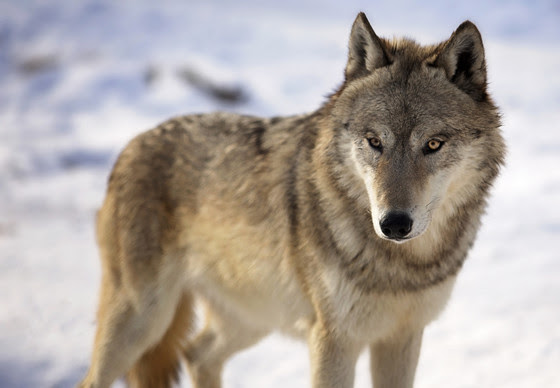
The Wisconsin Department of Natural Resources (DNR) announced Monday that a wolf harvest season will take place Feb. 22-28, 2021.
All hunters and trappers interested in obtaining a wolf harvest permit or preference point must apply beginning at 12:01 a.m. Tuesday, Feb. 16. The application period will close at 11:59 p.m. on Saturday, Feb. 20. Customers may apply through their Go Wild account or by visiting a participating license agent. The application permit fee is $10 plus $49 ($251 non-resident) for a wolf license if selected.
The department will post application results to each applicant’s Go Wild account the morning of Monday, Feb. 22. Customers may commence the harvest season once they secure their license and carcass/pelt tag.
The DNR will post the updated rules and regulations for the February 2021 wolf harvest season on the wolf hunting and trapping webpage no later than Friday, Feb. 19. Printed copies will not be available in time for the February wolf harvest season.
Customers interested in applying for a harvest permit or preference point should note that the Go Wild website will be down for previously scheduled maintenance 2-6 a.m. Saturday, Feb. 20.
During the Natural Resources Board Special Meeting on Feb. 15, the board unanimously voted for a harvest quota of 200 wolves outside reservation lands.
The department’s approved quota considered 2020 wolf population data, population response to previous harvest seasons, scientific literature, and population model projections. The proposed quota objective is to allow for a sustainable harvest that neither increases nor decreases the state’s wolf population.
Before any licenses are issued, the department will take steps to honor the Ojibwe Tribes’ right to declare up to half of the harvestable surplus in the Ceded Territory, per the Tribes’ treaty rights and court rulings.
The U.S. Fish and Wildlife Service removed gray wolves from the federal endangered species list on Jan. 4, 2021, returning management authority to the lower 48 states and tribes. The Wisconsin DNR has successfully managed gray wolves for decades and will continue to do so under our state’s laws and the best science available.
The DNR will continue to plan for a wolf harvest season to open on Nov. 6, 2021, while simultaneously working towards completing a 10-year wolf management plan to guide management decisions beginning in 2022.
For more on wolves in Wisconsin, visit the DNR website for additional information on wolf hunting and trapping, wolf management and wolf conflict abatement.
USDA: Nearly 60,000 Farm Workers in Wisconsin and Surrounding States
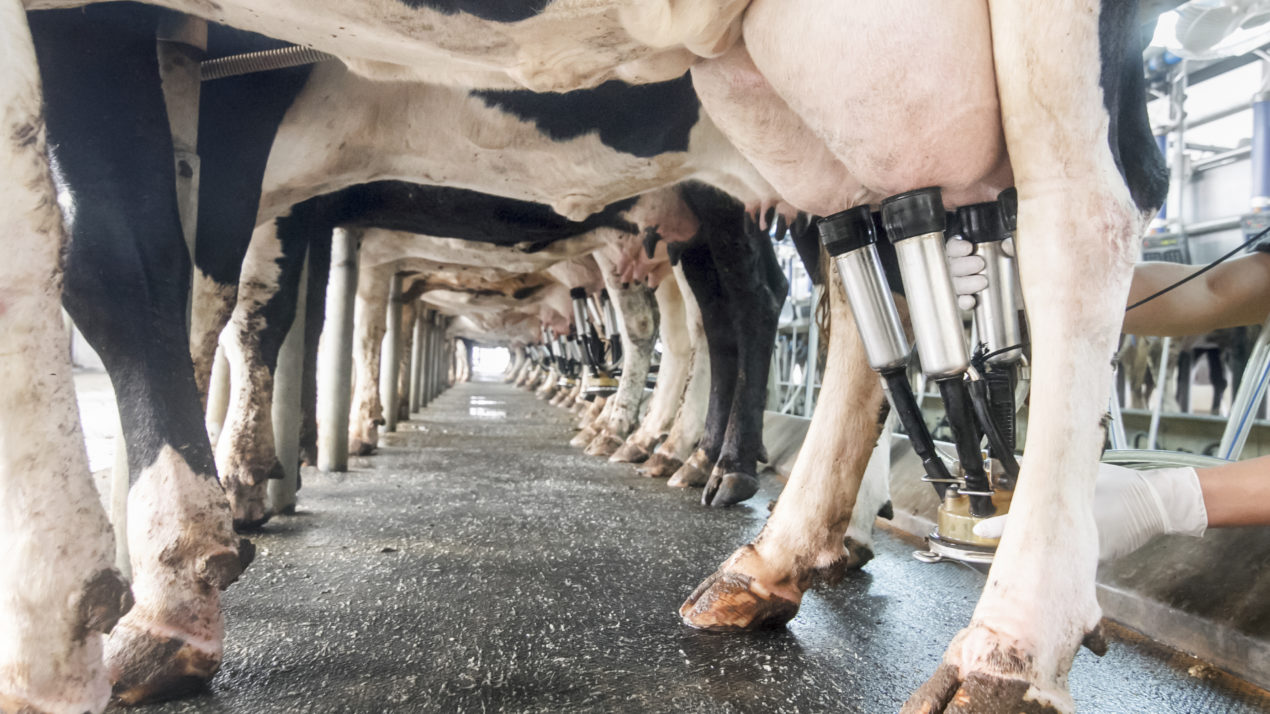
There were 58,000 workers hired directly by farms in the Lake Region (Michigan, Minnesota, and Wisconsin) during the reference week of July 12-18, 2020, according to the latest USDA, National Agricultural Statistics Service – Farm Labor Report. This was down 12% from the July 2019 reference week. Farm operators paid their hired workers an average wage rate of $15.24 per hour, up 19 cents from July 2019. The number of hours worked averaged 39.8 for hired workers during the reference week, compared with 40.5 hours during the July 2019 reference week.
During the reference week of October 11-17, 2020, there were 57,000 workers hired directly by farms in the Lake Region (Michigan, Minnesota, and Wisconsin). This was down 16% from the October 2019 reference week. Farm operators paid their hired workers an average wage rate of $15.72 per hour during the October 2020 reference week, up 8 cents from October 2019. The number of hours worked averaged 41.3 for hired workers during the reference week, up from 41.0 hours during the October 2019 reference week.
Nomination Period Open for Wisconsin Potato Industry Board
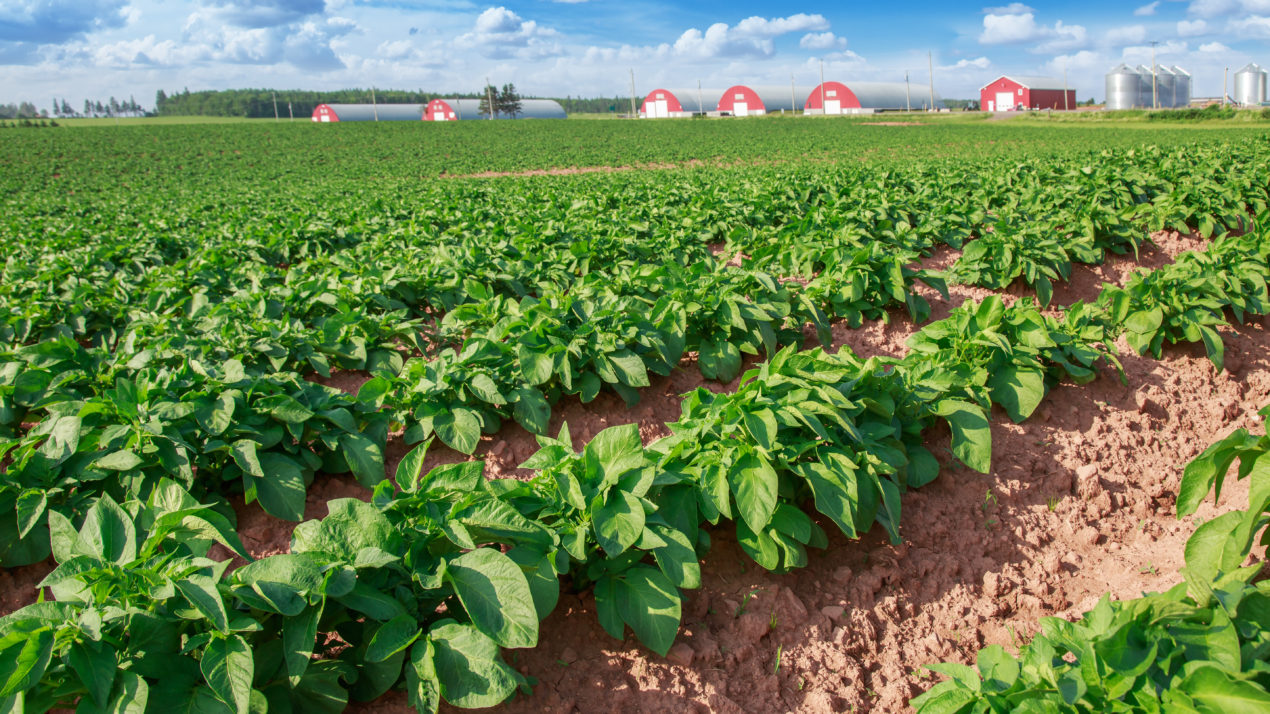
Wisconsin potato growers interested in serving on the Wisconsin Potato Industry Board (WPIB) have until April 1 to submit their nomination form. Forms should be submitted to the Wisconsin Department of Agriculture, Trade and Consumer Protection (DATCP), which oversees the nomination and election process. Three seats on the nine-member board are up for election.
Potato growers in each of the three WPIB districts have until April 1 to nominate members to the industry’s market order board. Only affected producers are eligible to nominate or be nominated. An affected producer is an individual, partnership, corporation, or other business entity selling in commercial channels potatoes produced in Wisconsin on five or more acres that the producer owns or leased during the crop year of 2018, 2019, or 2020.
DATCP will mail nomination forms to eligible growers. Growers who have not received nomination forms by March 1, 2021, or who have other questions about the nomination process should contact Debbie Gegare, Market Orders Program Coordinator at 608-224-5116 or [email protected].
Each nomination form must include signatures of at least five eligible potato growers, other than the nominee, from the district in which the nominee is running for office. An Affidavit of Eligibility is located on the nomination form and must be completed and notarized. Completed forms must be postmarked on or before April 1, 2021.
The open positions represent the following counties:
District 1 – Ashland, Barron, Bayfield, Brown, Burnett, Chippewa, Clark, Door, Douglas, Dunn, Eau Claire, Florence, Forest, Iron, Kewaunee, Langlade, Lincoln, Marinette, Menominee, Oconto, Oneida, Pepin, Pierce, Polk, Price, Rusk, Sawyer, St. Croix, Taylor, Vilas, and Washburn.
District 2 – Marathon, Outagamie, Portage, Shawano, Waupaca, and Waushara.
District 3 – Adams, Buffalo, Calumet, Columbia, Crawford, Dane, Dodge, Fond du Lac, Grant, Green, Green Lake, Iowa, Jackson, Jefferson, Juneau, Kenosha, La Crosse, Lafayette, Manitowoc, Marquette, Milwaukee, Monroe, Ozaukee, Racine, Richland, Rock, Sauk, Sheboygan, Trempealeau, Vernon, Walworth, Washington, Waukesha, Winnebago, and Wood.
DATCP will conduct the WPIB election by mail from May 15 to June 15, 2021. Elected board members will serve from July 1, 2021, to June 20, 2024.
The nine-member board is responsible for collecting and allocating about $1.3 million in annual assessment fees paid by Wisconsin potato growers. The money is used to support the industry through research, market development, and consumer education.
DATCP administers elections for the WPIB and other commodity marketing boards in the state. To learn more about Wisconsin’s market order boards, visit https://datcp.wi.gov/Pages/About_Us/MarketingBoards.aspx.
State Conservation Congress Looking For Youth

Wisconsin students interested in the outdoors are invited to join the Youth Conservation Congress. This statewide youth program is designed to grow and develop future conservation leaders across the state. The Youth Conservation Congress (YCC) is a student extension of the Wisconsin Conservation Congress.
The purpose of YCC is to give young people a voice and instill a sense of ownership, civic pride and advocacy for Wisconsin’s natural resources. The YCC strives to effectively engage, educate, and involve youth in the management and protection of our natural resources and foster a conservation ethic through participation in the program.
The YCC program offers opportunities for students from all backgrounds, including seasoned outdoor enthusiasts and novices alike. Although the program is best suited for high school students, younger individuals are welcome to apply.
“I am especially excited about this program because it allows youth an incredible opportunity to work directly with a variety of natural resource managers and experienced outdoor mentors,” said YCC Coordinator Kyle Zenz, who is working to connect more students across the state with the YCC. “Our mission is to provide students with access and the opportunity to follow their outdoor passions whether they are hunting and fishing related or natural resource career driven.”
YCC student delegates are exposed to various aspects of natural resource management and have access to professionals in those fields. Students also receive real-world experience through a variety of service-learning opportunities.
By joining, members gain an understanding of the process for how Wisconsin’s natural resource policy is determined, including the role and history of the Wisconsin Conservation Congress – the state’s statutorily recognized citizen advisory body.
| “I enjoy learning about conservation across the state, as well as volunteering directly with the DNR,” said YCC delegate Samantha Hammiller (pictured at left), of Racine, who has eagerly engaged in all that the YCC has to offer. “One of my most memorable outdoor experiences would have to be pheasant stocking with local DNR staff. I loved learning from this hands-on opportunity, especially knowing that I am contributing to wildlife management.” Samantha will be attending the University of Wisconsin – Stevens Point (UWSP) next fall and has already connected with UWSP staff as well as natural resource leaders in the state due to her involvement with the YCC. “The YCC really allows you to explore options for your future and network across the entire state with adult and youth delegates and DNR personnel along with other agencies and conservation groups,” she said. The YCC program mirrors the Conservation Congress’s focus on county level initiatives. County Congress members serve as mentors and as a point of local contact for the YCC delegates. Youth who are interested in the program should contact Kyle Zenz with questions about the YCC and how to apply for the program. More information is available here. |
Dairy Calf & Heifer Meeting Heads To Appleton
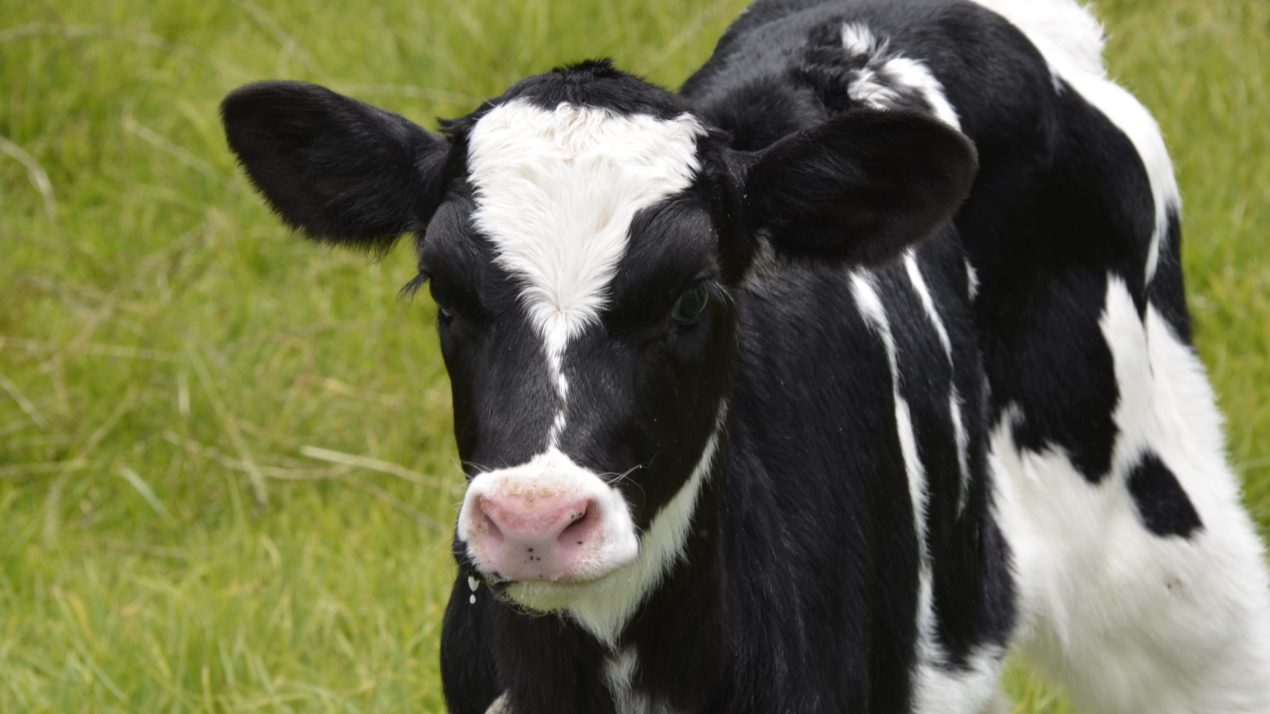
The Dairy Calf & Heifer Association (DCHA) board of directors and staff invite you to attend the 2021 DCHA Annual Conference and Trade Show, April 6-8, at the Red Lion Hotel Paper Valley, Appleton, Wis. With the theme “25 Years of Growing Your Dairy’s Future,” the DCHA Annual Conference and Trade Show offers an opportunity to build on past accomplishments, learn from worldwide calf and heifer experts, and lead calf and heifer growers toward a sustainable future.
The conference kicks off with an optional tour to Shiloh Dairy, LLC in Brillion. The farm has 2,600 cows including 2,000 heifers on 1,500 acres. Owned and operated by Gordon Speirs, Travis Speirs and family, the dairy’s roots trace back to 1930 in Calgary, Alta., Canada. Gordon relocated to America’s Dairyland in 2003 and established a new dairy with 300 milking cows. During the DCHA farm tour, visitors will see calves from birth to freshening. Highlights include a heated nursery, starter barn and calf hutches. Calves travel through the dairy heifer facilities, which are all on site. Calves drink pasteurized milk for weeks and heifers freshen at 23 months of age.
To register for the DCHA conference, go to: http://bit.ly/DCHAConferenceRegistration.
During the afternoon of April 6, attendees may attend two pre-conference seminars. “Antibody protection for calves vs. vaccination,” sponsored by ImmuCell, features a panel of dairy producers. They will discuss their experiences with verified antibodies and vaccine responses within their dairy herds. Presenters will also explain the differences in how antibodies work and how vaccines work in a calf’s immune system.
Jodi McGill, Iowa State University (ISU) assistant professor of vet microbiology and preventative medicine, will address “Impact of Saccharomyces cerevisiae fermentation products on the calf immune response and susceptibility to respiratory infection,” sponsored by Diamond V. She will focus on a recent ISU study that suggests supplementing with Saccharomyces cerevisiae fermentation products modulates systemic and mucosal immune responses, and may improve the outcome of an acute respiratory viral infection in preweaned dairy calves.
DCHA’s Annual Conference & Trade Show officially starts on April 7, with Theresa “Terri” Ollivett’s presentation on the DCHA Gold Standards. Ollivett, a DCHA board member and University of Wisconsin School of Veterinary Medicine assistant professor, will highlight some key Gold Standards, discuss their value and point out some recent updates.
Matt Rush, a decorated public speaker, will provide the closing presentation on April 7 and the keynote address on April 8. During his “Planting the seeds of greatness” discussion, he will explain that since the beginning of time, agriculturists have understood the necessity of planting seeds in hope of a harvest. “However, times have changed and people in agriculture are no longer viewed as providers,” Rush stated. “Therefore, if we are going to change that and create a new future, we must begin planting something different.”
In the keynote address – “There’s a snake in my bumper” – Rush will address how the general public has become more removed from the American farm and the importance of telling agriculture’s story. “American agriculture MUST reintroduce herself to this nation and other nations,” he said. “We must tell our story to remain viable, valuable and visible.”
Breakout sessions include:
- Targeting the immune system to reduce and prevent bovine respiratory disease, Jodi McGill, ISU
- Vaccinating calves and heifers: Why do we do what we do? Amelia Woolums, Mississippi State University
- Key aspects of solid feed for calves from birth to post-weaning: Nutrients, physical forms and quantity, Alex Bach, ICREA
- Nutritional strategies to support recovery of diarrheic calves, Juliette Wilms, Trouw Nutrition
- Serum total protein: An accurate or deceiving test for monitoring passive transfer status, Mike Nagorske, SCCL
- Dairy data deep dive: Insights on the impact of early life on future performance, Jackie Boerman, Purdue University
- Healthy calves + Efficient operation = Sustainable business, Phillip Visser, Ecolab
Plus, the 25th DCHA Annual Conference & Trade Show features an engaging trade show of dairy calf and heifer vendors. These DCHA partners provide leading products, services and technologies to help you manage a successful dairy calf and/or heifer enterprise. Look at the DCHA “Young Stock Alley” webpage (https://calfandheifer.org/tradeshow) to view DCHA partners’ information.
For more information about the 2021 DCHA Conference, go to: https://calfandheifer.org/2021-annual-conference. The Red Lion Hotel Paper Valley will serve as the DCHA Annual Conference host site. Make your hotel reservations today by calling 920-733-8000.
Talk to FSA About Quality Loss Adjustment Program
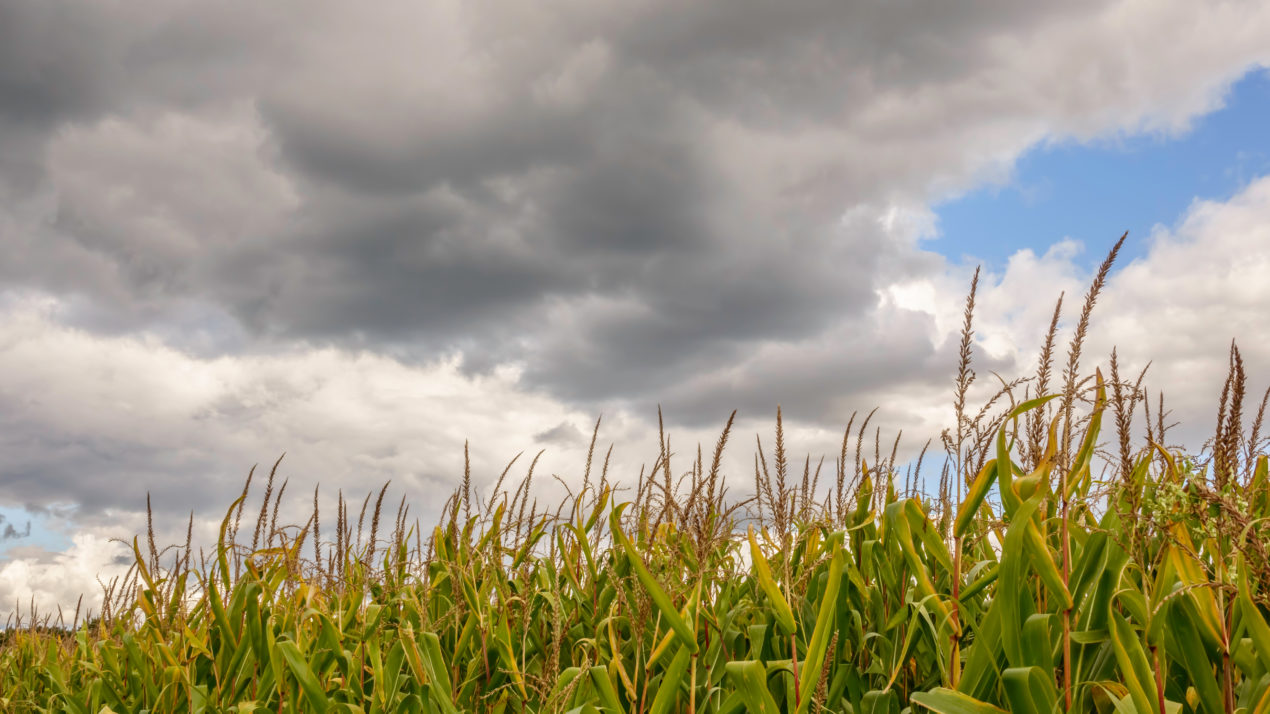
By Dr. Paul Mitchell, UW-Madison
Remember the big rain events in 2018, like the 15 inches that fell in south central Wisconsin? Remember the wet start to 2019 and the late and snowy harvest of 2019? Wisconsin farmers who suffered quality losses for grain or forage crops in 2019 or 2018 from disasters like excessive moisture, flooding or snowstorms may be eligible for Quality Loss Adjustment (QLA) payments from the USDA Farm Service Agency. The deadline for applications is March 5, 2021, so farmers need to move quickly to submit an application if you suffered losses.
For grains, farmers need settlement sheets or grading documents that show the impacts of eligible disasters on test weights, foreign matter or other measures of quality that lead to discounts. For forage (hay or silage), farmers need TDN measures for their production in the affected year and the three previous years. Those that have historical TDN data need to show a 5% or larger decrease in quality compared to their historical average to trigger QLA payments. Those without historical data can use the county average quality for comparison but have an additional discount factor applied.
There are additional eligibility and verification requirements so farmers with quality losses for grain or forage in 2018 and/or 2019 should seek more information. See the FSA website https://www.farmers.gov/quality-loss or contact your county FSA office to learn more about QLA and additional eligibility and documentation requirements.

